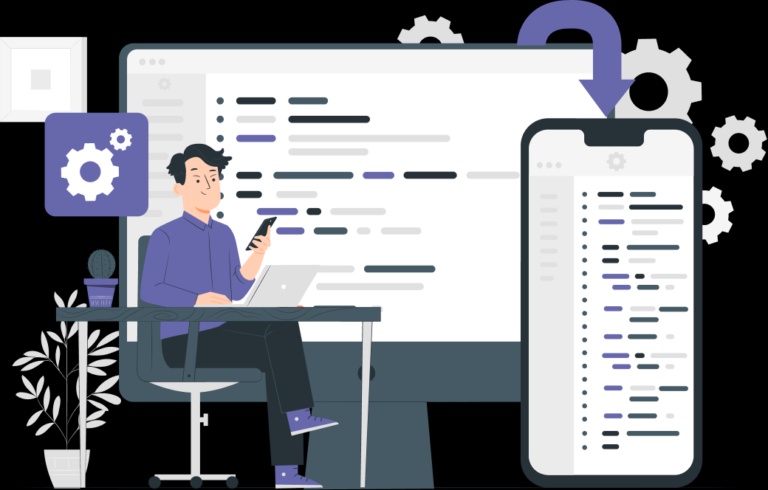Product development is the heartbeat of innovation. It's the process of turning an idea into a tangible product that meets the needs and desires of consumers. However, it's not just about having a brilliant concept; it's about executing that concept effectively. Product development is a complex and multifaceted process that can make or break a company's success in the market. One of the most effective ways to introduce new offerings is through custom mobile apps. However, developing a successful mobile app is no small feat. It involves a carefully structured product development cycle.
In this article, we'll explore the crucial stages and strategies involved in creating a custom mobile app, with a focus on the importance of product development services.
The Product Development Cycle Unveiled
Whether you're a startup working on your first product or an established company looking to expand your product line, understanding the stages and strategies of the product development cycle is essential.
The product development cycle is a structured approach that guides businesses through the journey of creating, refining, and launching a new product. It is a carefully orchestrated process that brings together diverse teams, ideas, and resources to transform a concept into a tangible, marketable reality. This cycle is not just a necessary chore; it is the heartbeat of innovation, the mechanism through which dreams become products that enrich our lives.
Product development services play a pivotal role in guiding you through the various stages effectively. By understanding and implementing the key stages and strategies, you can increase your chances of creating a successful product that not only meets customer needs but also drives business growth. In today's digital era, innovation through custom mobile apps is a powerful tool for staying competitive in the market.
Here are the various product development stages:
Stage 1: Idea Generation and Conceptualization
Every great product starts with a spark of inspiration. Idea generation is the foundation of the product development cycle. It's where you brainstorm, identify market gaps, and envision solutions. Strategies for this stage include market research, brainstorming sessions, and drawing inspiration from diverse sources. The key is to nurture a culture of creativity and encourage team collaboration.
Stage 2: Concept Development and Evaluation
Once you have a handful of promising ideas, it's time to flesh them out. Create concepts, prototypes, or wireframes to visualize your product. In this stage, you'll evaluate each concept's feasibility, market potential, and alignment with your business goals. Strategies for concept development include creating a minimum viable product (MVP), conducting user surveys, and seeking feedback from potential customers.
Stage 3: Planning and Strategy
With a solid concept in hand, it's time to create a roadmap. Planning is all about setting goals, defining timelines, and allocating resources effectively. Consider factors like budget, technology, and team expertise. Your strategy should outline how you'll tackle challenges, mitigate risks, and adapt to changes in the market.
Stage 4: Design and Development
This is where the magic happens! Design and development bring your concept to life. User experience (UX) and user interface (UI) design play a crucial role in shaping your product. In the development phase, teams work tirelessly to code, test, and iterate. Strategies include agile development methodologies, regular testing, and maintaining open lines of communication within the team.
Stage 5: Testing and Quality Assurance
A product riddled with bugs won't make anyone happy. In this stage, rigorous testing and quality assurance ensure that your product functions smoothly. Strategies for effective testing include automated testing tools, real-world testing scenarios, and beta testing with a group of early adopters.
Stage 6: Launch and Marketing
The launch is your grand entrance into the market. It's where all your hard work pays off. Effective strategies here include creating a buzz through social media, PR campaigns, and partnerships. A well-planned launch can make or break your product's success.
Stage 7: Post-launch Evaluation and Feedback
Product development doesn't end with the launch; it evolves. Collect user feedback, analyze data, and continuously improve your product. This iterative approach keeps your product relevant and responsive to customer needs.
Stage 8: Scaling and Growth
Once you've achieved a level of success, it's time to scale and grow. Strategies may include expanding to new markets, diversifying your product line, or exploring partnerships and collaborations.
Stage 9: Maintenance and Innovation
As your product matures, ongoing maintenance is crucial. Regular updates, bug fixes, and security patches are essential. Additionally, never stop innovating. Keep an eye on emerging trends, technologies, and customer preferences to stay ahead of the competition.
Conclusion
The product development cycle is an exhilarating journey from concept to creation, marked by stages and strategies that demand creativity, dedication, and adaptability. By embracing each stage with enthusiasm and a strategic mindset, you can bring your ideas to life and make a lasting impact in the ever-changing world of business and technology. So, start your engines, navigate the innovation highway, and let your product development cycle take you to new heights of success.


No comments yet